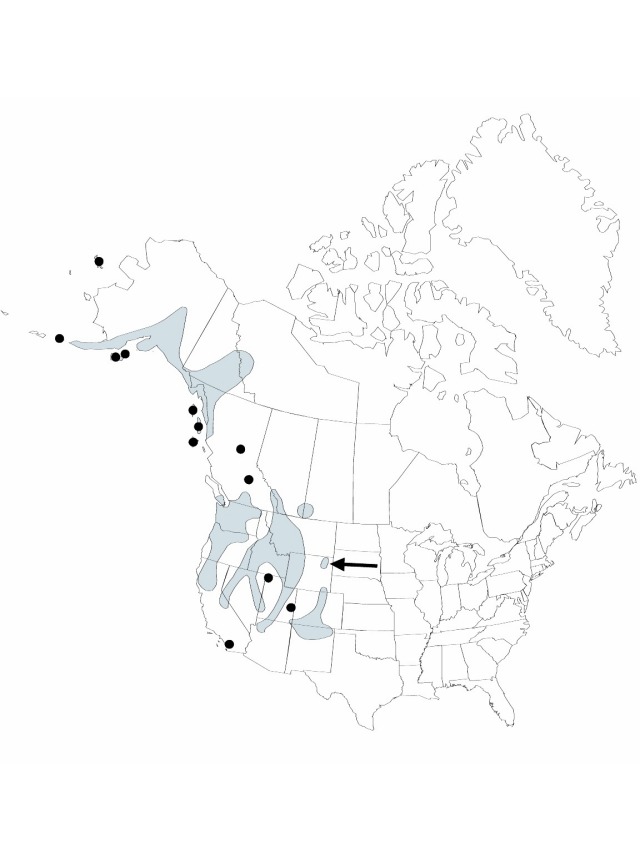Juncus mertensianus
Mém. Acad. Imp. Sci. St.-Pétersbourg, Sér. 6, Sci. Math. 2: 167. 1833.
Herbs, perennial, rhizomatous to cespitose, 0.5–4 dm. Rhizomes 1–2 mm diam., not swollen. Culms erect, terete, 1–3 mm diam., smooth. Cataphylls 0–1, straw-colored to chestnut brown, apex acute. Leaves: basal 1–2, cauline 0–1; auricles 1–1.2 mm, apex rounded to acute, membranaceous or scarious; blade green to straw-colored, terete, 3–15 cm × 0.3–0.6 mm. Inflorescences terminal single head (rarely cluster of 2 heads), 0.5–1.6 cm; primary bract erect; heads 12–60-flowered, spheric (to hemispheric), 4.5–15 mm diam. Flowers: tepals dark purplish brown to black, lanceolate to lance-ovate, apex acute, mucro subulate; outer tepals 2.4–4.9 mm; inner tepals 2.3–4.3 mm; stamens 6, anthers 1/4 to equal filament length. Capsules included or slightly exserted, chestnut brown, 1-locular, obovoid, 1.9–3.5 mm, apex obtuse or rounded, valves separating at dehiscence, fertile throughout or only proximal to middle. Seeds ellipsoid, 0.4–0.5 mm, not tailed; body clear yellow-brown. 2n = 40.
Phenology: Fruiting mid summer–fall.
Habitat: Montane to alpine meadows, stream banks, lake margins, and conifer woods
Elevation: (400–)1900–3300 m
Distribution

Alta., B.C., N.W.T., Sask., Yukon, Alaska, Ariz., Calif., Colo., Idaho, Mont., Nev., N.Mex., Oreg., Utah, Wash., Wyo.
Discussion
Populations from southern California with brown tepals, anthers equaling filaments, and rounded to acute, translucent auricles have been separated as Juncus duranii; the typical form is so highly variable, however, that it can easily accommodate this local form. This species passes into Juncus nevadensis and has often been combined with that species (F. J. Hermann 1964). The two species can generally be separated, and we are following those treatments (F. J. Hermann 1975; A. Cronquist et al. 1972+, vol. 6).
Selected References
None.
